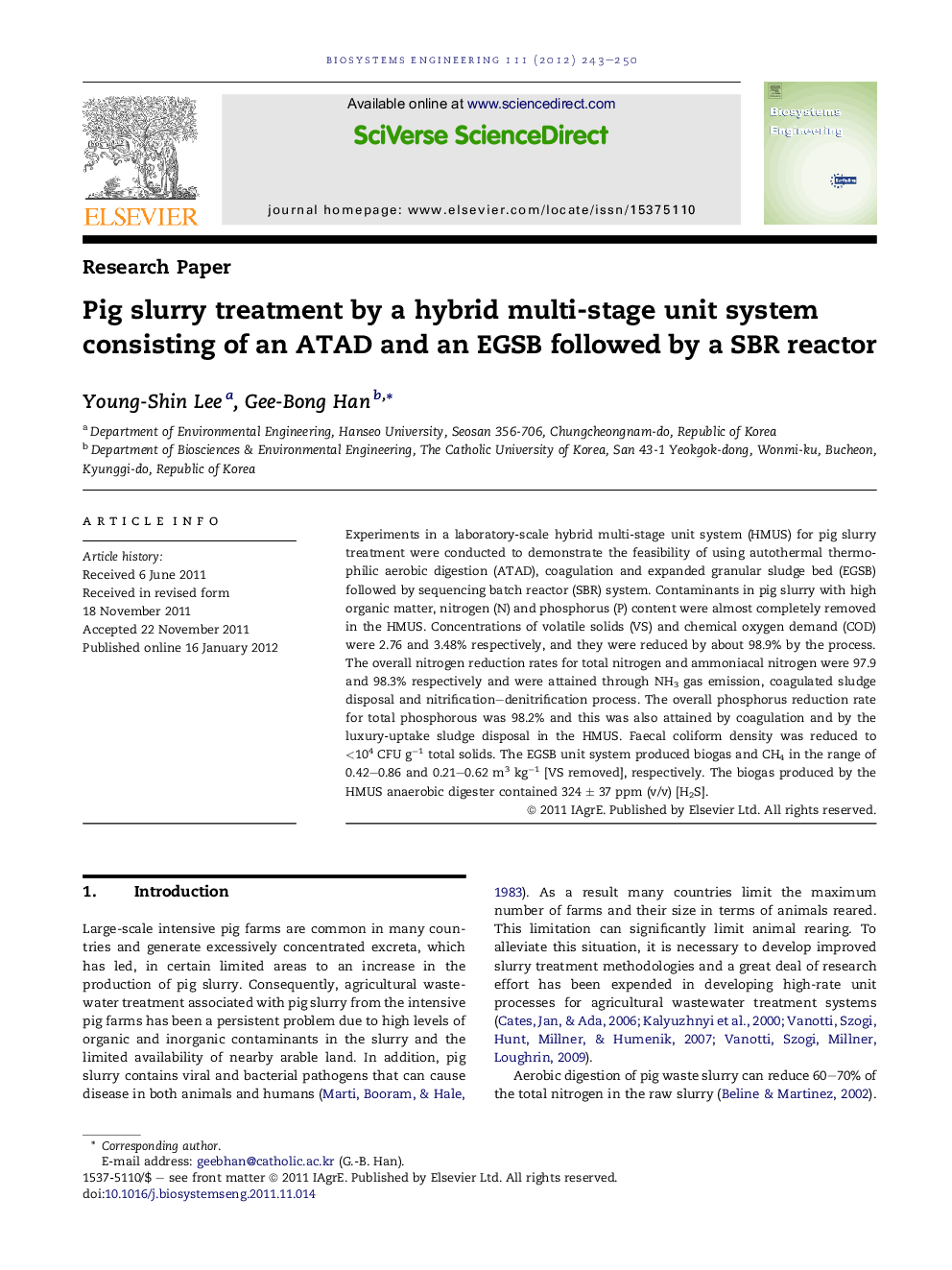| کد مقاله | کد نشریه | سال انتشار | مقاله انگلیسی | نسخه تمام متن |
|---|---|---|---|---|
| 1711484 | 1013080 | 2012 | 8 صفحه PDF | دانلود رایگان |

Experiments in a laboratory-scale hybrid multi-stage unit system (HMUS) for pig slurry treatment were conducted to demonstrate the feasibility of using autothermal thermophilic aerobic digestion (ATAD), coagulation and expanded granular sludge bed (EGSB) followed by sequencing batch reactor (SBR) system. Contaminants in pig slurry with high organic matter, nitrogen (N) and phosphorus (P) content were almost completely removed in the HMUS. Concentrations of volatile solids (VS) and chemical oxygen demand (COD) were 2.76 and 3.48% respectively, and they were reduced by about 98.9% by the process. The overall nitrogen reduction rates for total nitrogen and ammoniacal nitrogen were 97.9 and 98.3% respectively and were attained through NH3 gas emission, coagulated sludge disposal and nitrification–denitrification process. The overall phosphorus reduction rate for total phosphorous was 98.2% and this was also attained by coagulation and by the luxury-uptake sludge disposal in the HMUS. Faecal coliform density was reduced to <104 CFU g−1 total solids. The EGSB unit system produced biogas and CH4 in the range of 0.42–0.86 and 0.21–0.62 m3 kg−1 [VS removed], respectively. The biogas produced by the HMUS anaerobic digester contained 324 ± 37 ppm (v/v) [H2S].
► The feasibility of an innovative HMUS system was evaluated.
► Pig slurry treatment by multi-stage process was tested.
► ATAD and EGSB followed by SBR process were used.
► Both VS and COD in the feed pig slurry were reduced by about 98.9%.
Journal: Biosystems Engineering - Volume 111, Issue 3, March 2012, Pages 243–250